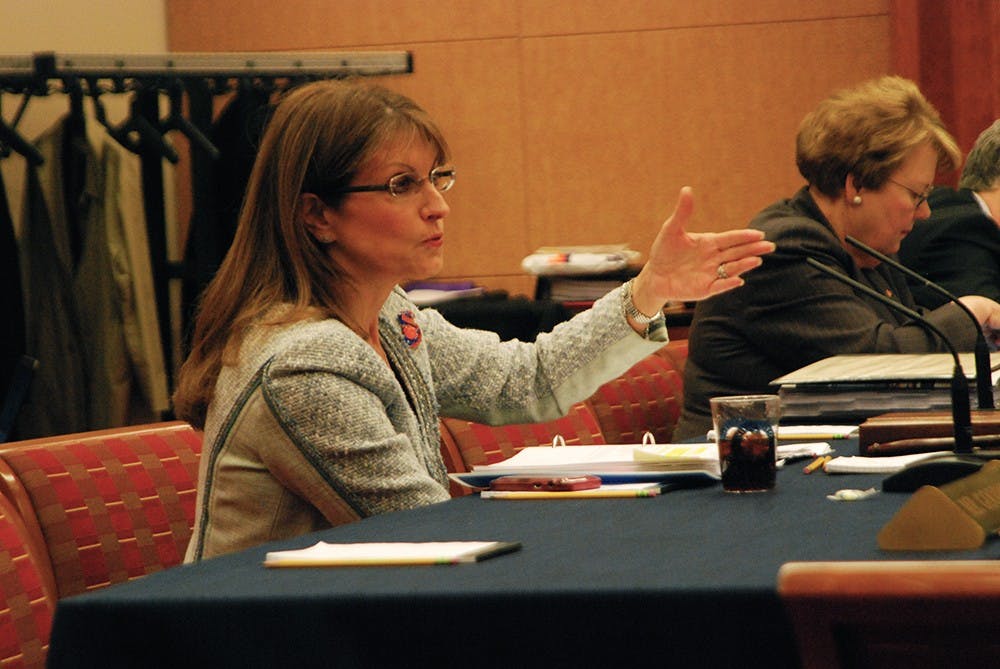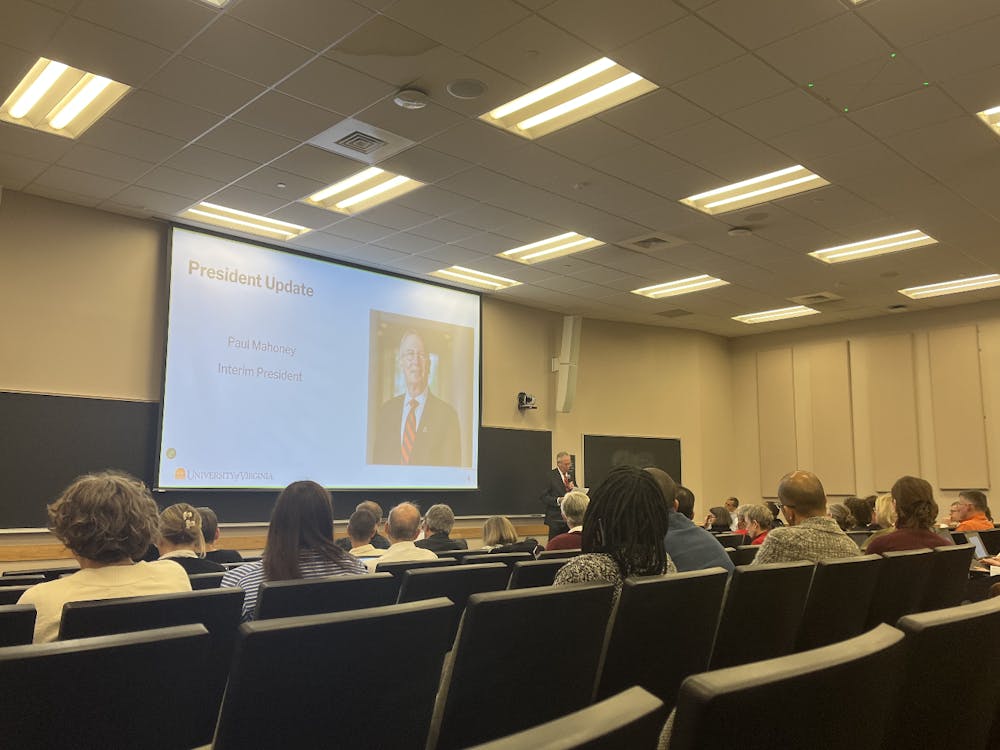The Board of Visitors took action Tuesday on a 3.9 percent tuition increase for all students, with additional tuition fees for students incoming in the fall of 2015 and the fall of 2016. The proposal was held to an official vote and passed by the Board in a closed session on Wednesday. Board members such as Helen Dragas questioned the Board’s transparency in moving forward with the plan.
Proposed by Vice-Chair of the Finance Committee John Griffin, the Affordable Excellence proposal is part of a new “high tuition, high aid” financial model.
The new model reduces student indebtedness for both low- and middle-income in state students and increases grant aid, according to a press release from the University Office of Communications.
The University will institute an increase of $1,000 in base tuition for in-state students entering the University for Fall 2015, and an additional increase of $1,000 for in-state students enrolling Fall 2016, resulting in a total step increase of $2,000.
Currently enrolled in-state students are exempt from the step increases. The revenue from the tuition increases will be used to fund tuition grants, making the plan effectively revenue neutral.
Including the 3.9 percent tuition increase, Board Member Helen Dragas said the incoming Class of 2019 will face a 13.4 percent increase in tuition from Fall 2014.
“It’s conceivable if the Board passes this, that an entering freshman... in 2016 would be paying 27 percent more than entering freshman in 2014,” Dragas said. “That’s got to be the most significant tuition increase in the country right now at a public university.”
Dragas said she does not see the plan as sustainable and likened it to a similar decision to raise both aid and tuition in 2004, which she said the BOV is still struggling to sustain.
“I don’t think our students are going to be getting an education that is 27 percent better in 2016 than in 2014,” Dragas said.
The proposal also included the development of a four-year, fixed-price base tuition contract option which will be available “at a reasonable premium.” This contract would be exclusive of fees and school-specific tuition differentials.
The proposal aims to minimize the role of loans as part of a financial aid strategy, including a goal of a “$10,000 reduction in maximum indebtedness after four years.”
Griffin addressed this concept of high tuition, high aid programs at universities.
“We have heard many times about about high tuition high aid [and] low tuition low aid,” Griffin said. “U.Va. is a hybrid.”
Board Member Frank Atkinson said a similar plan instituted at William & Mary over the course of three years has reduced the net price for low income students.
“Its important to emphasise the difference between sticker price and net price,” Atkinson said. “[The proposal] is not only revenue neutral, but every dollar goes back to aid.”
Because the plan intends to lower the debt burden to lower and middle income students by providing more aid, it will institute a cap on need based loans. The amount of need-based loans would be reduced to a maximum of $4000 for lower income in state students and a maximum of $18,000 for middle income in state students in this new model.
Atkinson said the average student debt burden is currently about $25,000.
“We are meeting 100 percent of need,” Atkinson said. “Everybody, not just low and middle income folks, will benefit from this loan cap.”
Atkinson said this plan is not a subsidy by higher income students of lower income students because the overall low cost of in state tuition acts as a subsidy, and without higher income students who can afford to pay a higher cost of tuition, he said the Board would lack the source of funds to lower the overall net cost.
“We can show data that currently, the wealthiest person gets a subsidy in that they get a below cost education at the University of Virginia,” Atkinson said. “Are we reallocating something? Yes, we are reallocating a portion of that subsidy from wealthy people to people who need it.”
Board Member Allison DiNardo suggested the Board wait a day to vote to allow all Board members to carefully consider the proposal.
“I would like to take a Board vote when we would normally take a Board vote,” DiNardo said. “I just want to register my concern that this information wasn’t provided to us earlier”
Dragas also said she took concern with the amount of transparency surrounding the proposal.
“I understand that we need to deliver certainty to applicants and people who are making decisions,” Dragas said. “But I think the same can be said about our early action offerees who have already accepted admission, and I wonder, if any of them are going to change their minds if we pass the 13.4 percent tuition increase.”
Dragas said she did not think the members responsible for the proposal — including the finance subcommittee, the administration members and lawyers — had properly posted the materials related to the proposal.
“We need to give the public reasonable time for input and I don't think we’ve done that,” Dragas said. “Legally we should have posted more information for parents and students and gotten their input.”
Dragas said the proposal was not posted online prior to the meeting.
Griffin said he thought the finance subcommittee spent ample time consulting its members and outside sources.
“The amount of time I’ve spent personally talking to students and subcommittee members is substantial,” Griffin said. “It would be wrong to characterize it as a rushed proposal without a lot of input.”
Atkinson also said while he did not present clear numbers, he did present the concept of the proposal in a public meeting in November.
Atkinson said he thinks student concerns will subside when students see the positive impact on the net price for low income students.
“Part of what we have done here is listened extensively,” Atkinson said.







